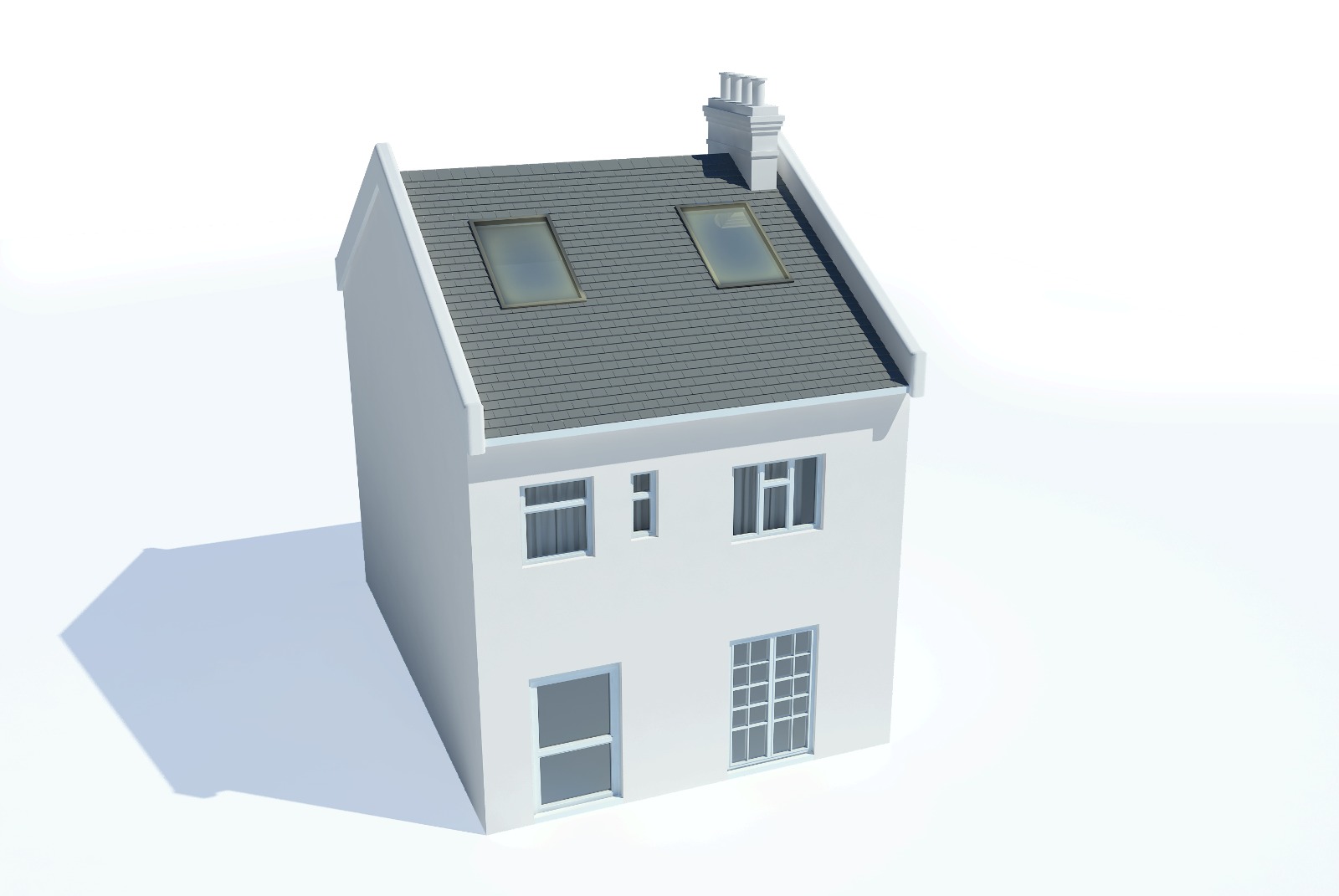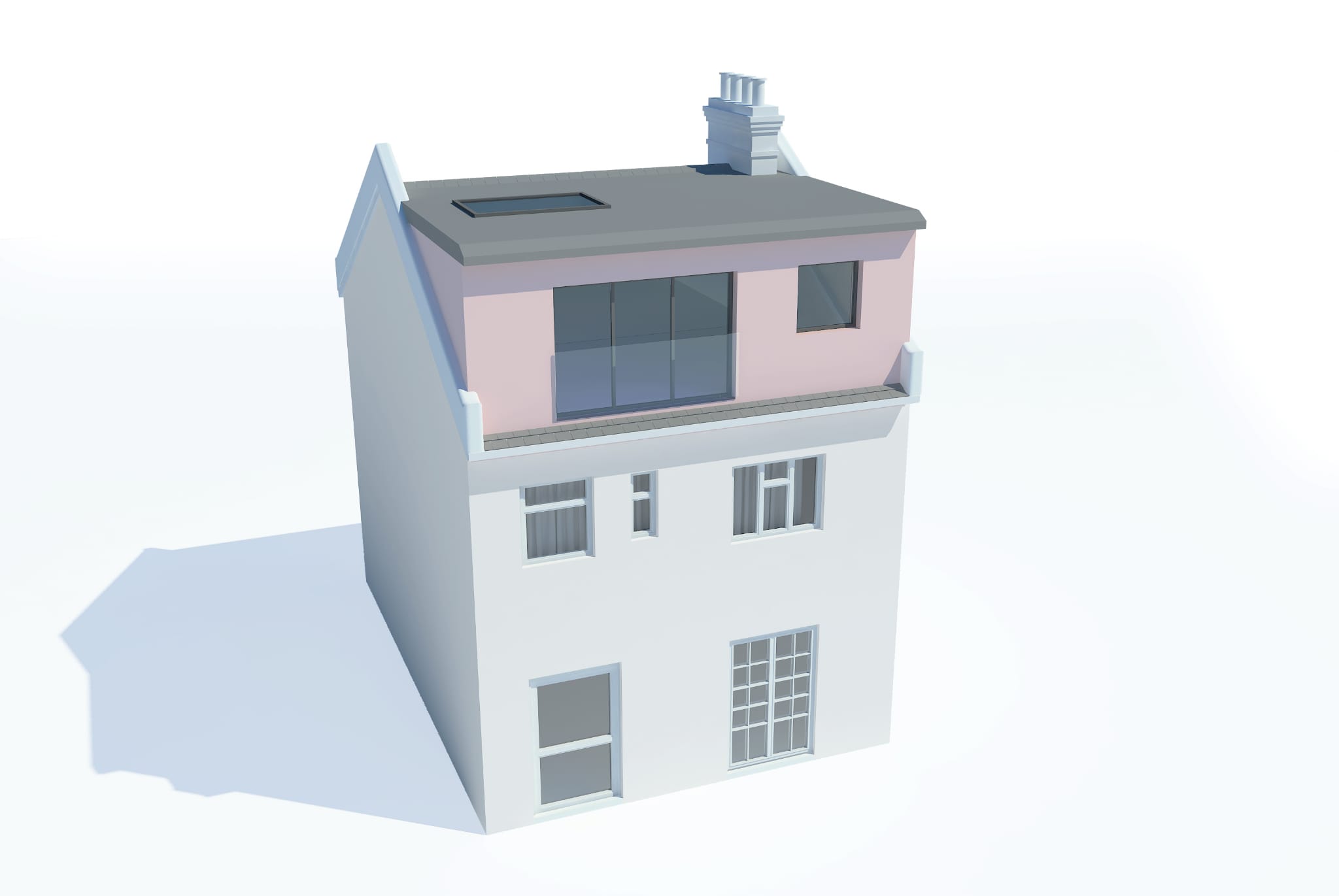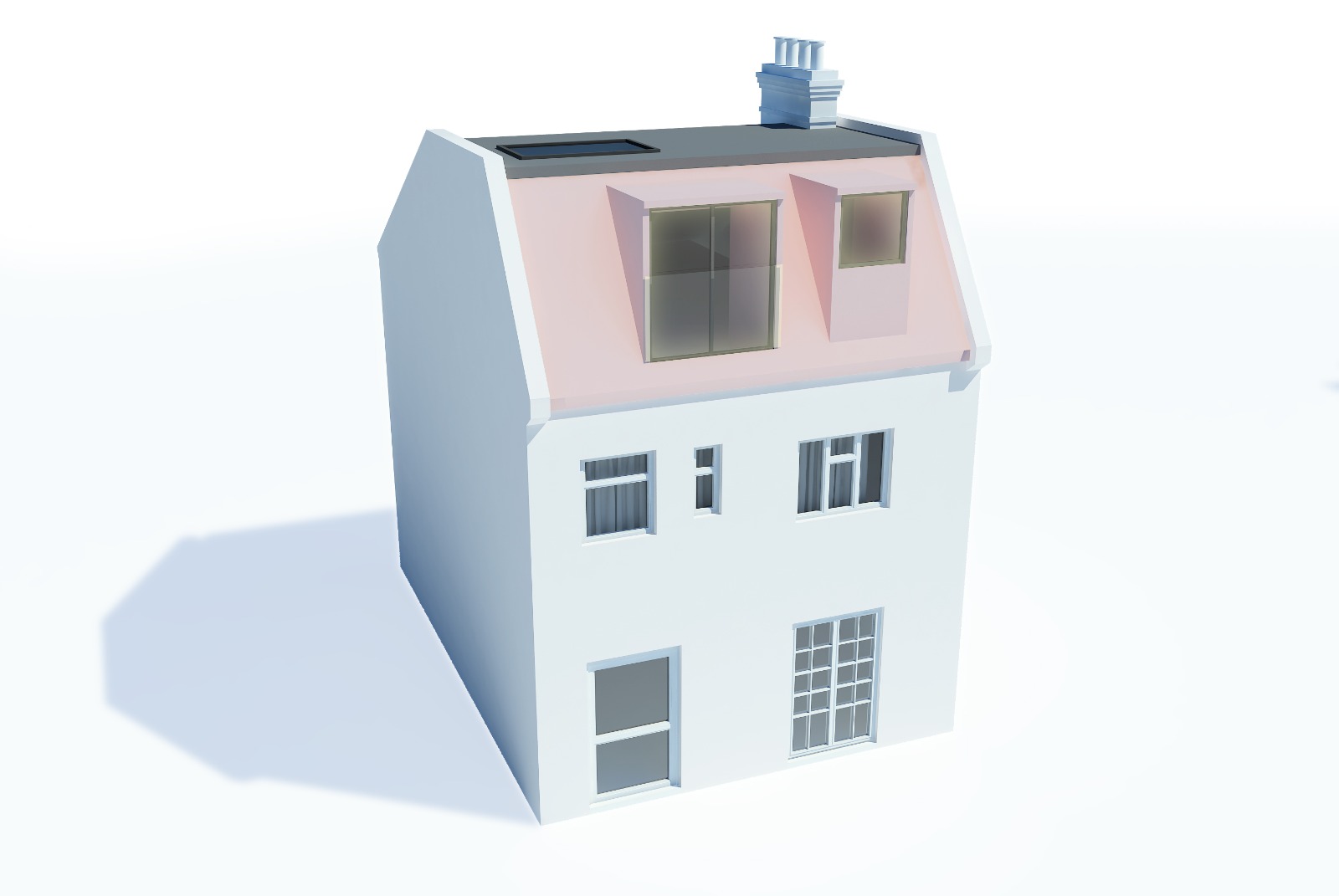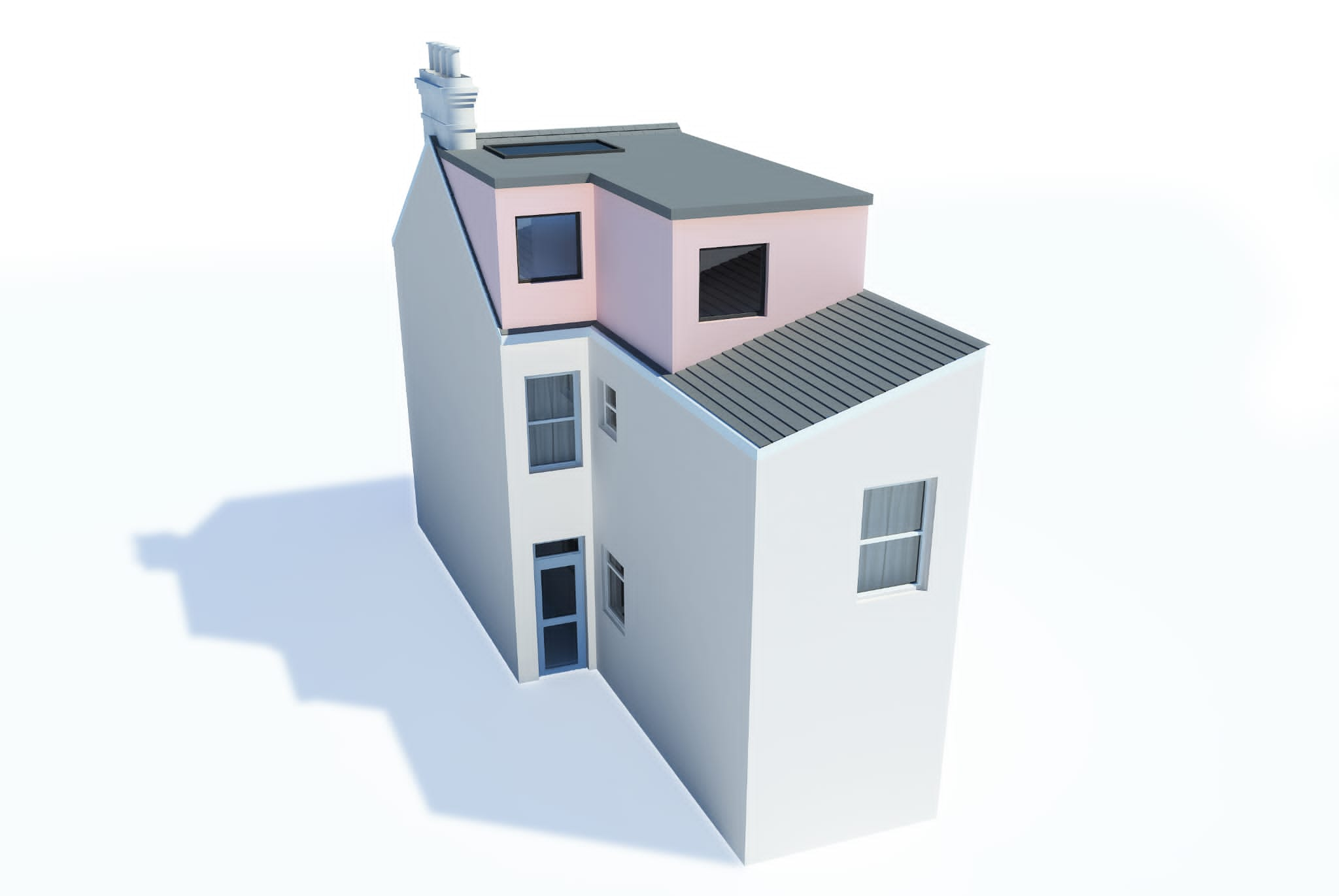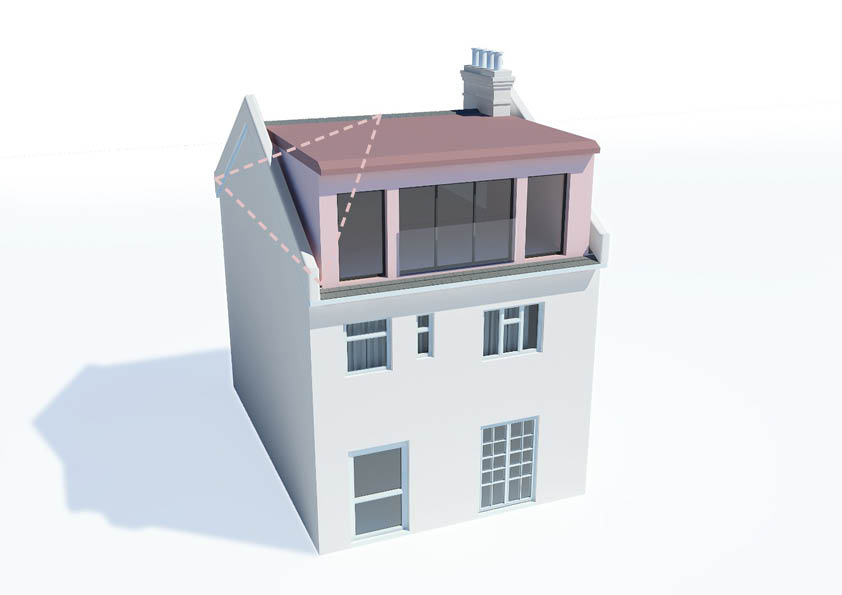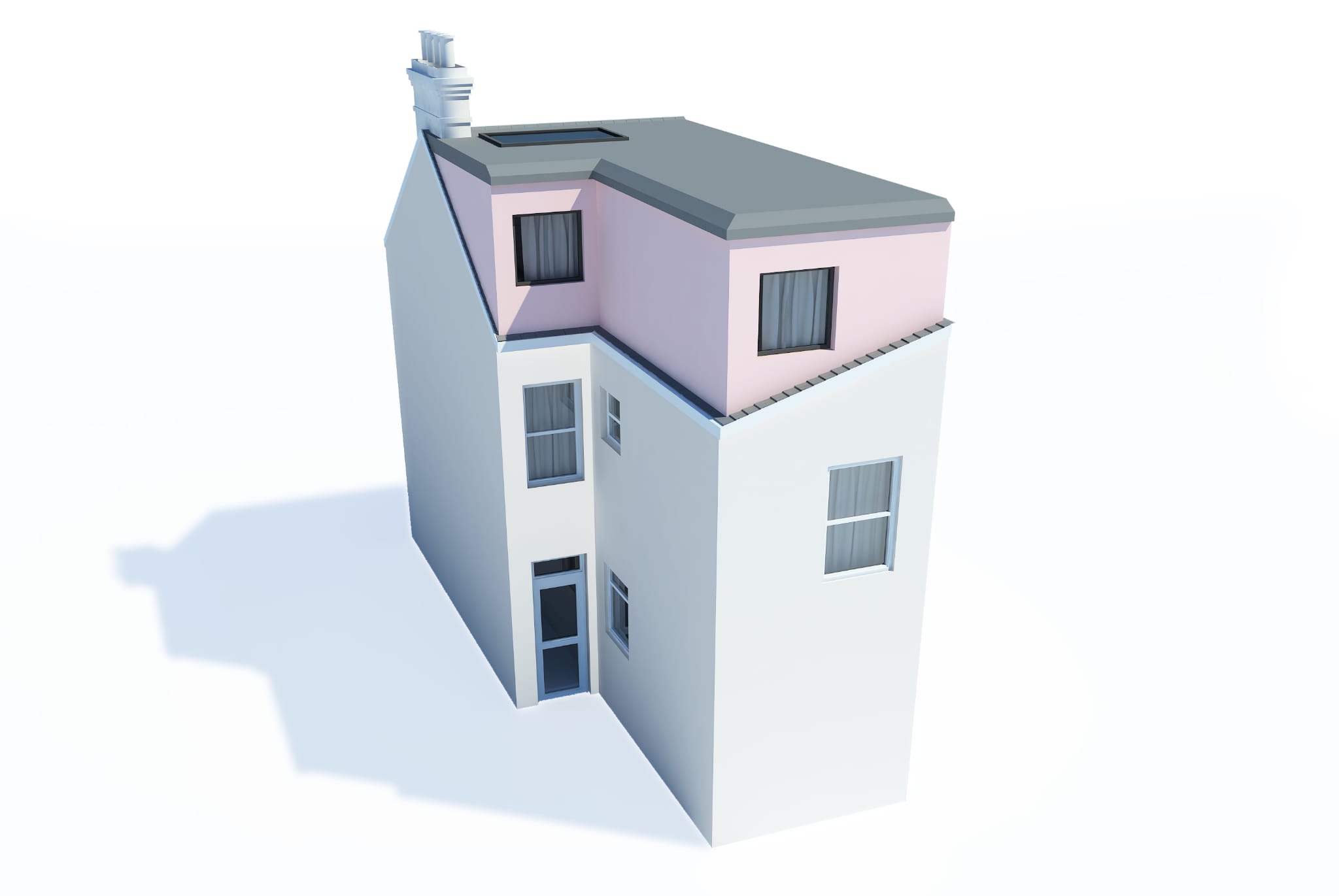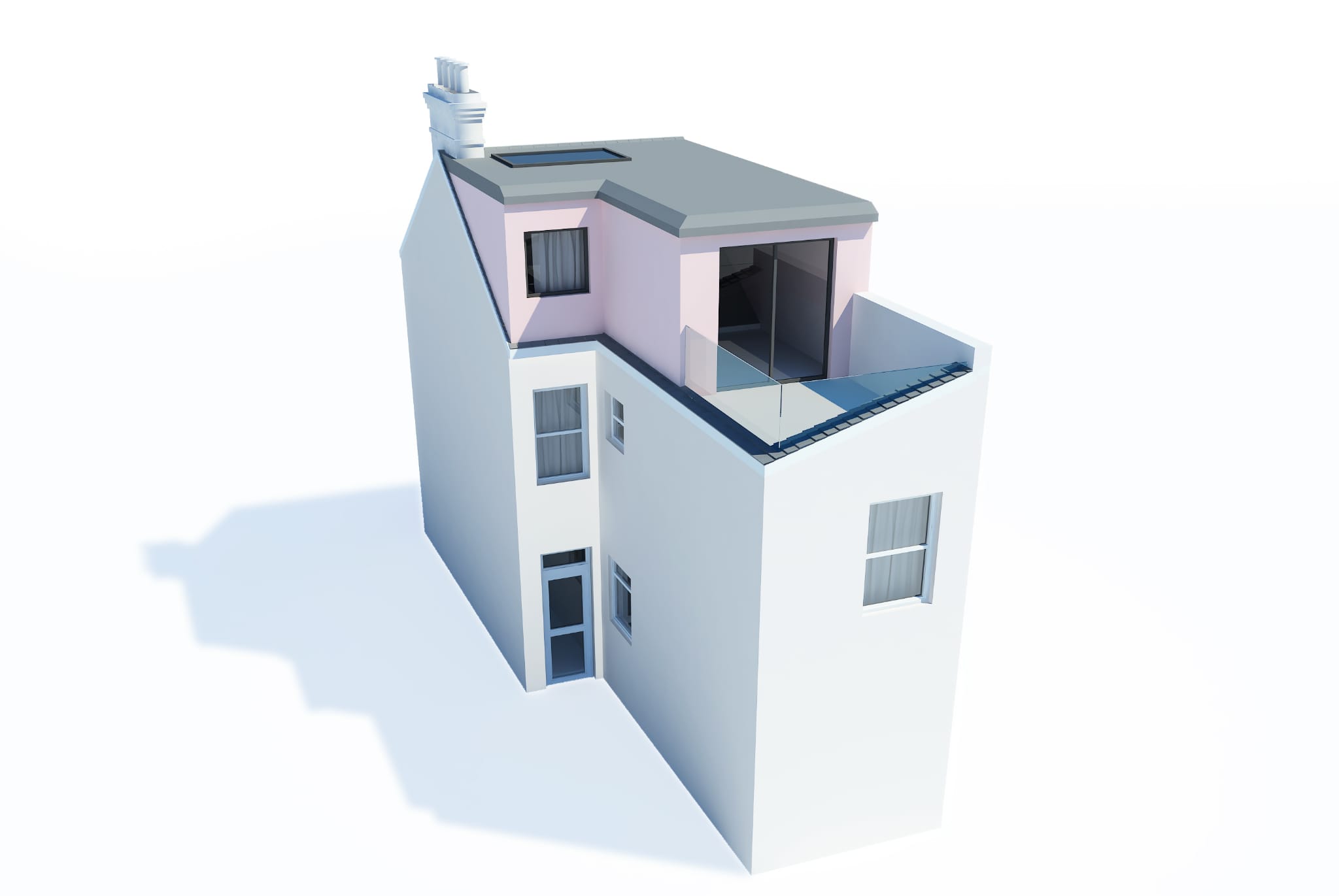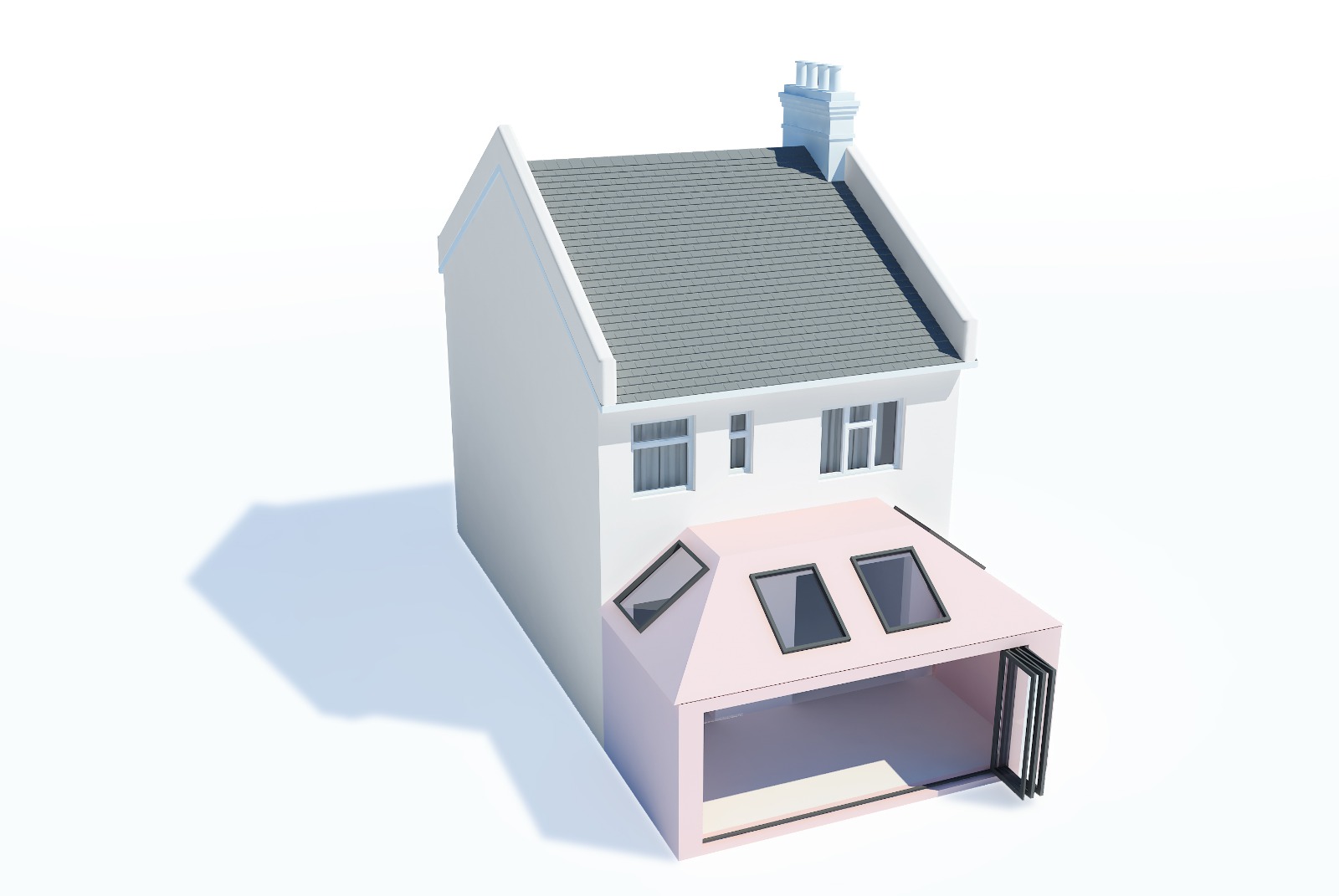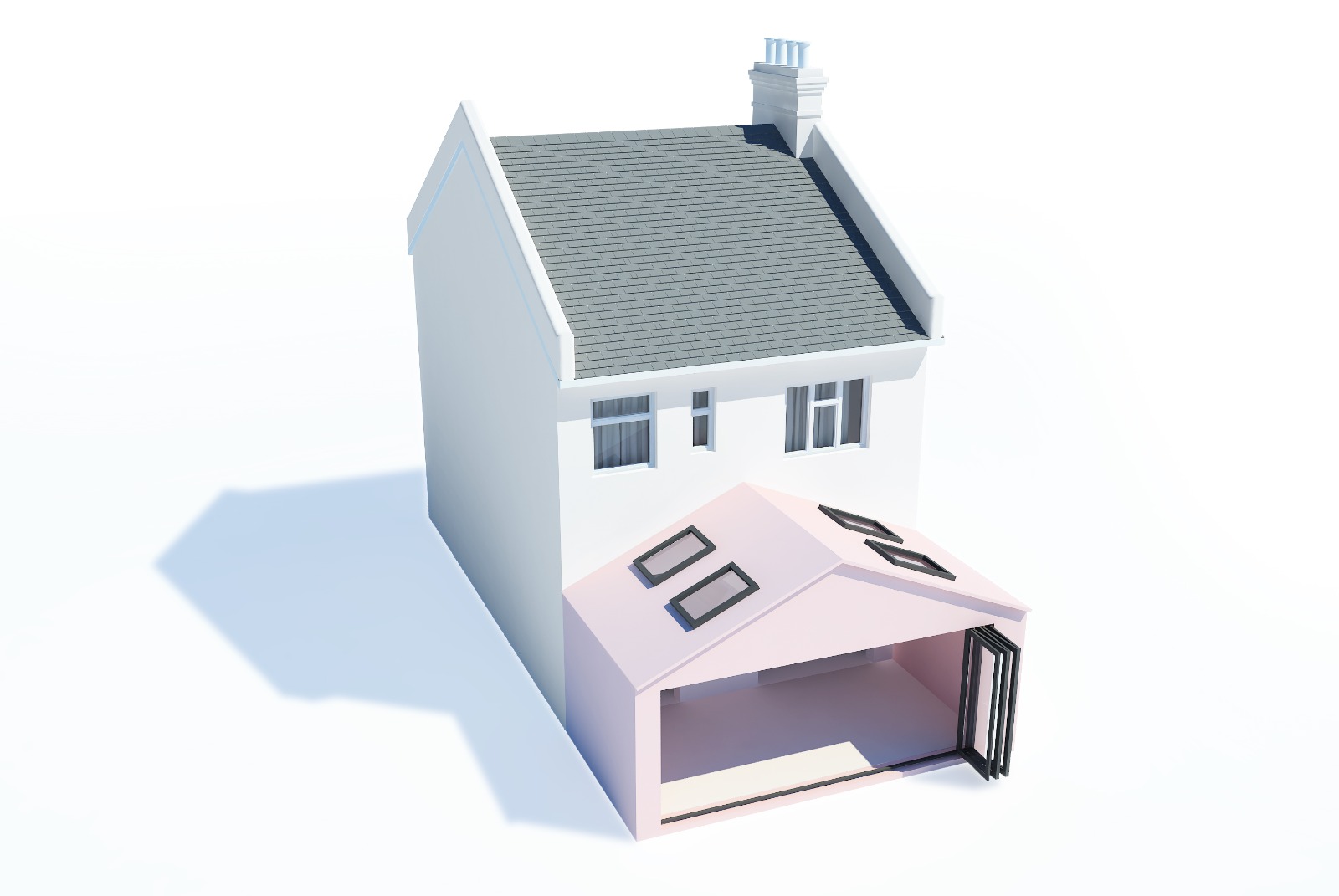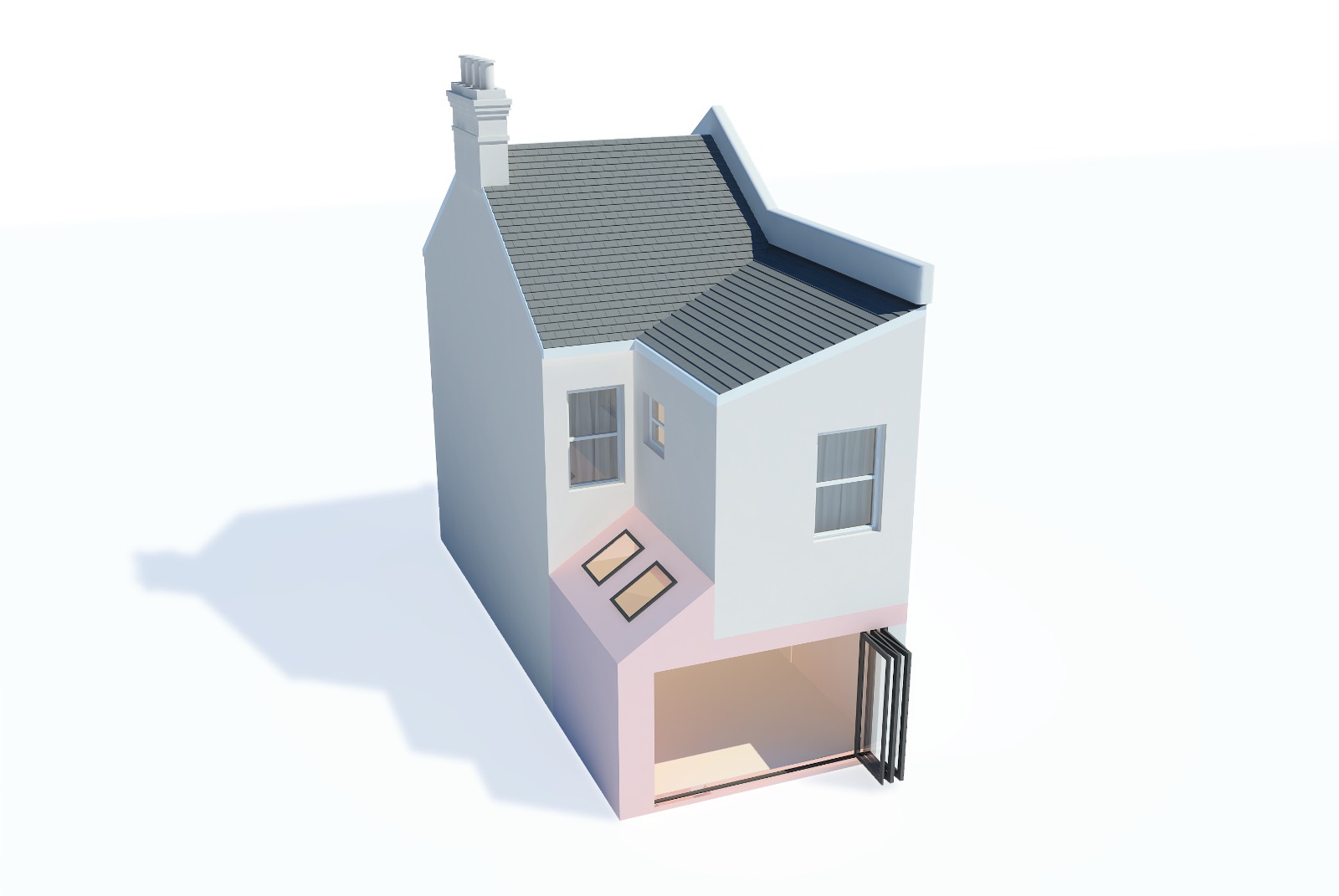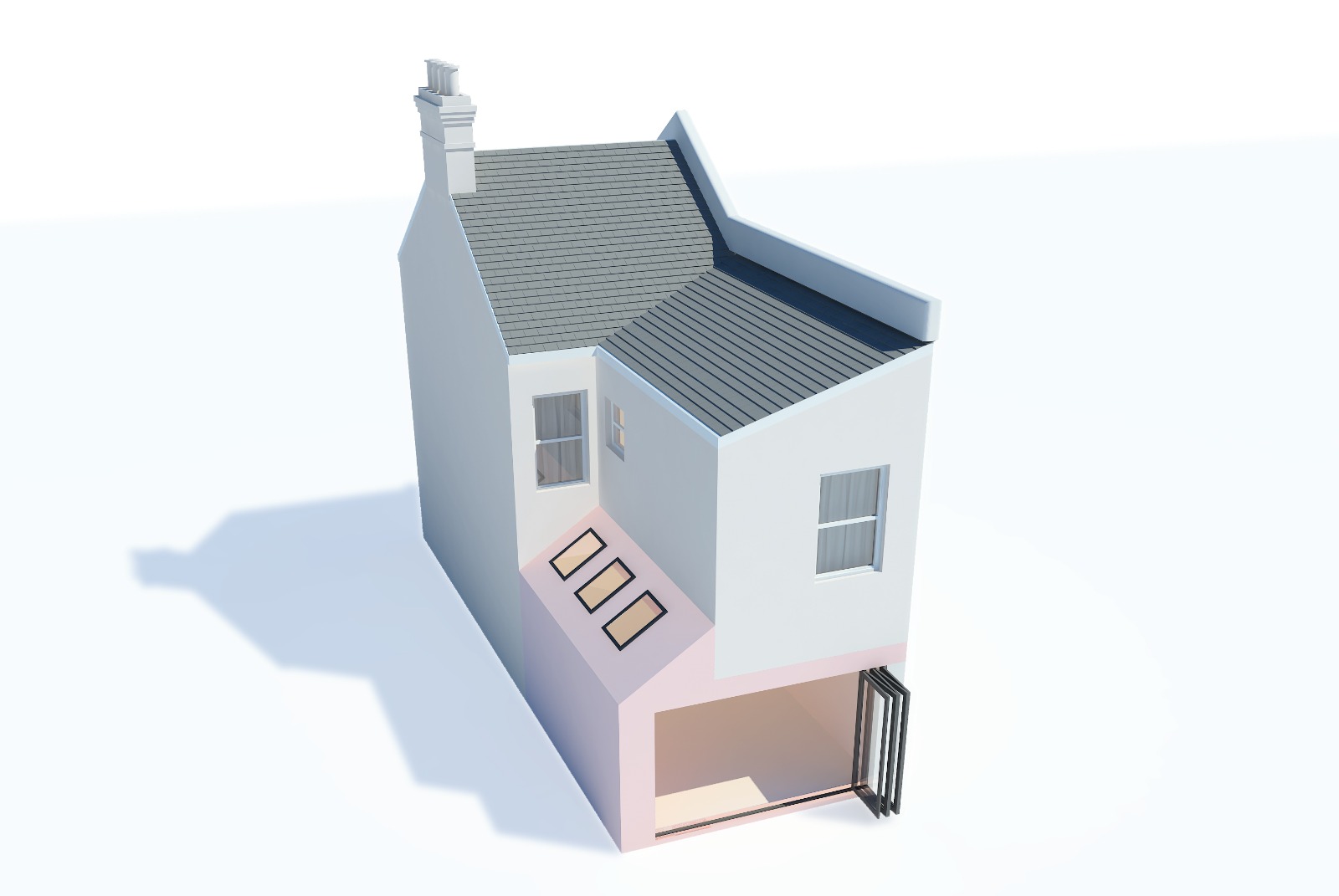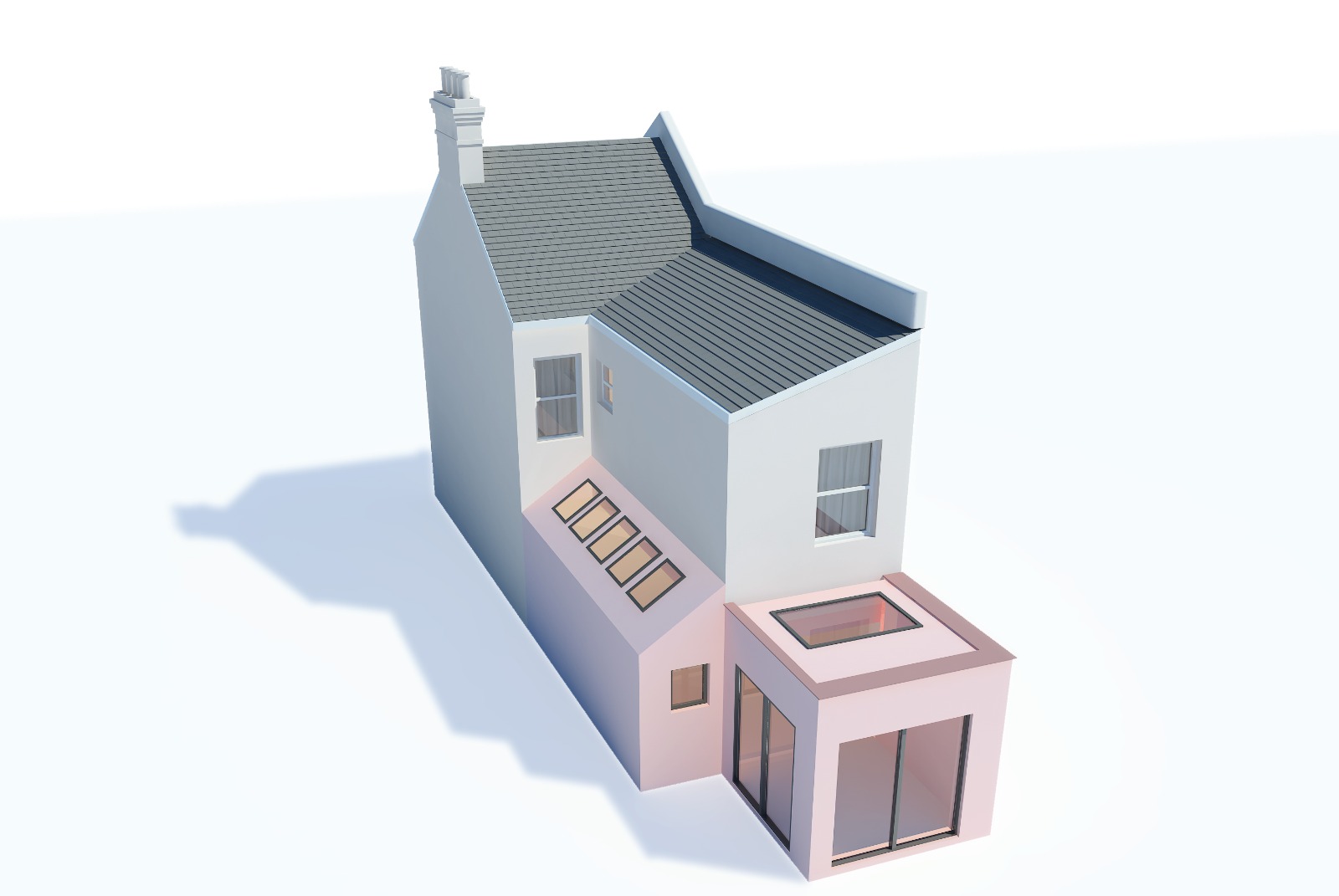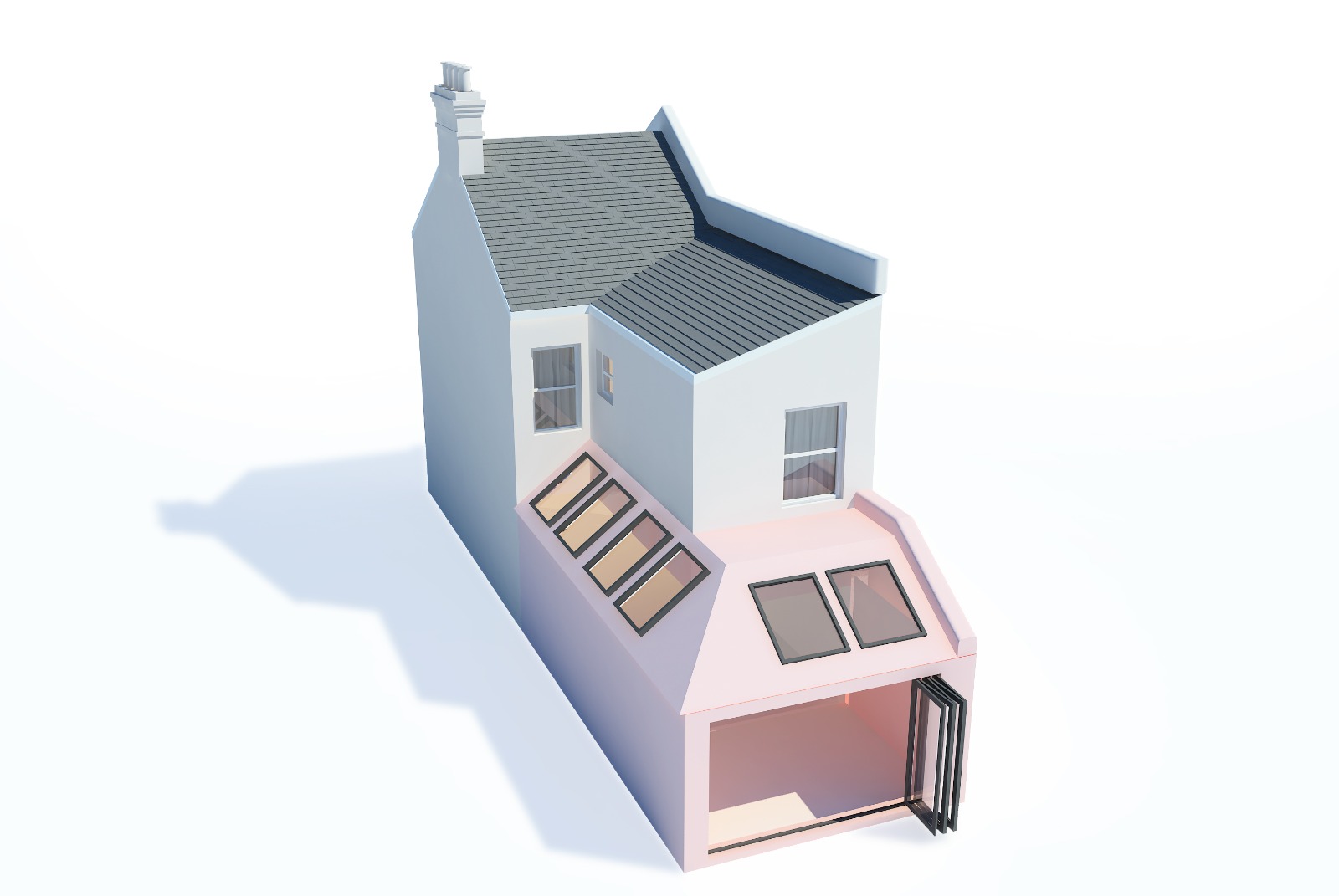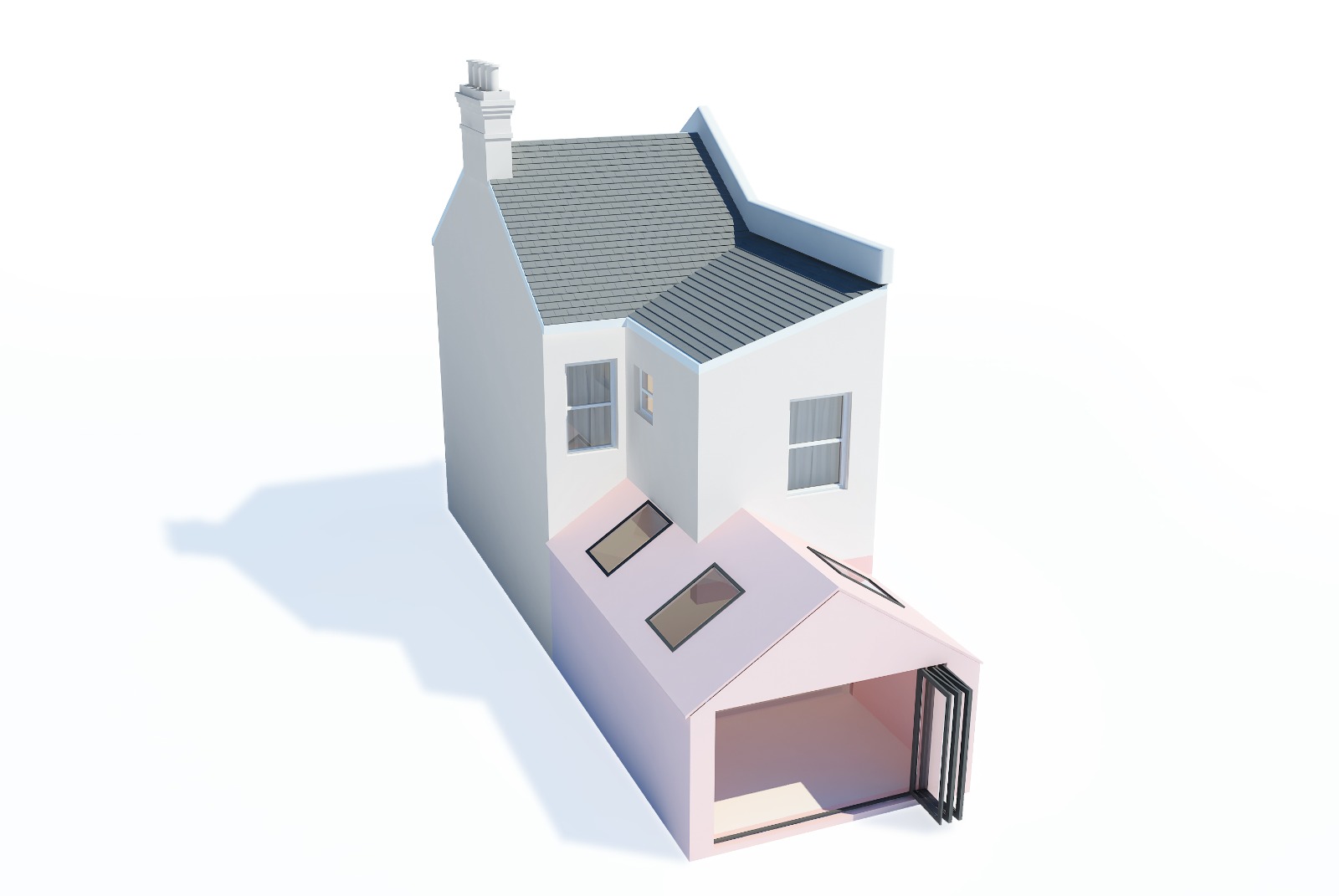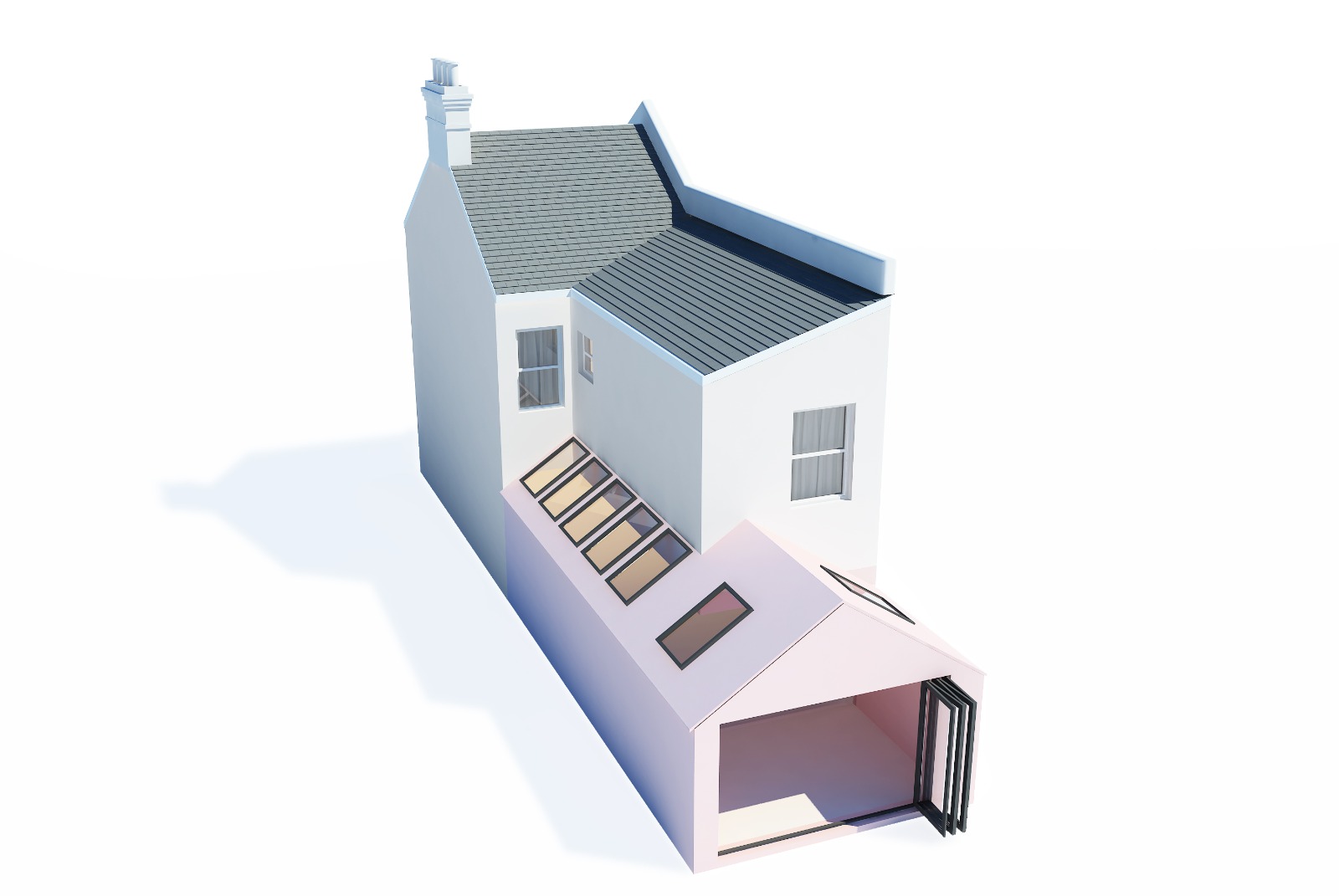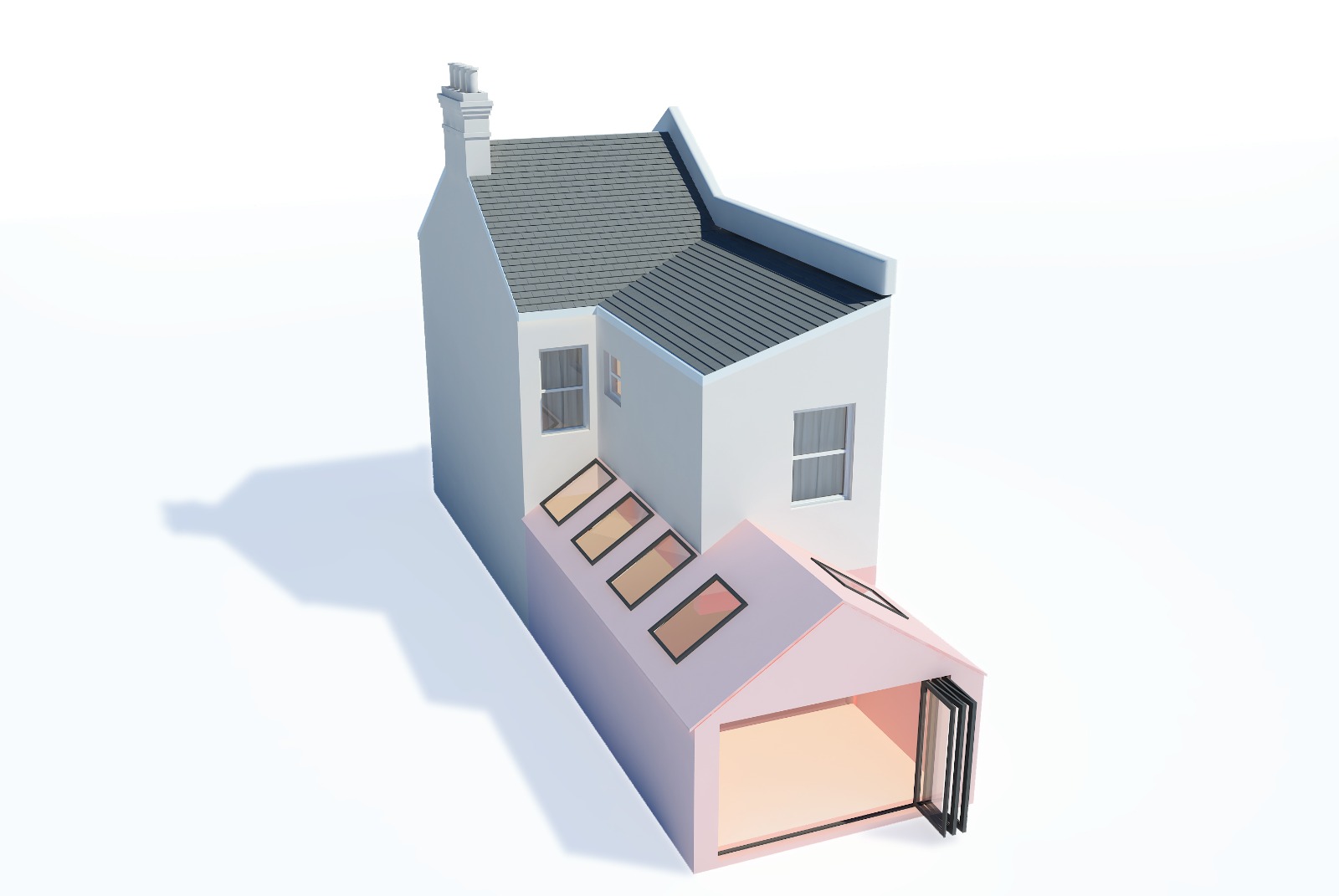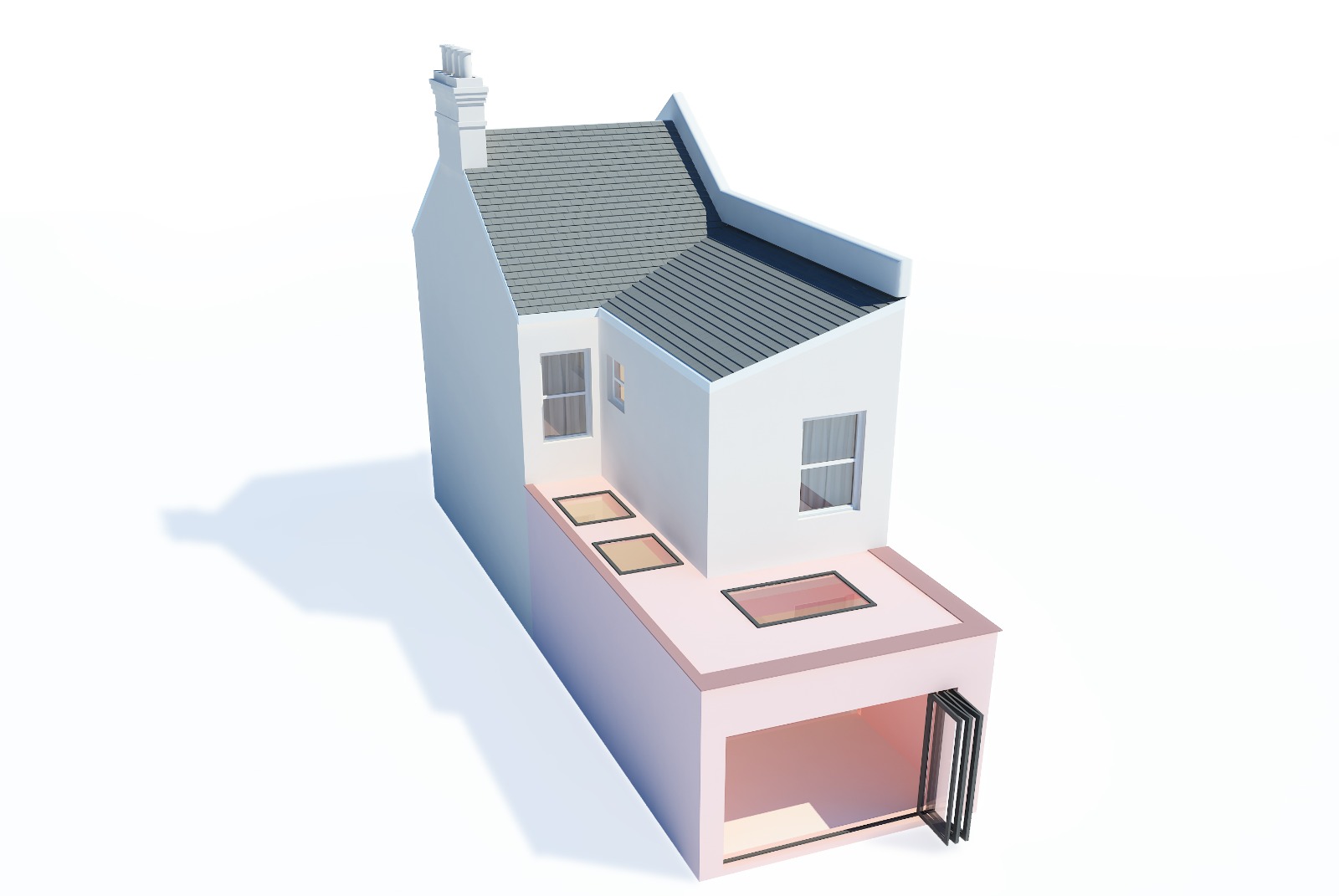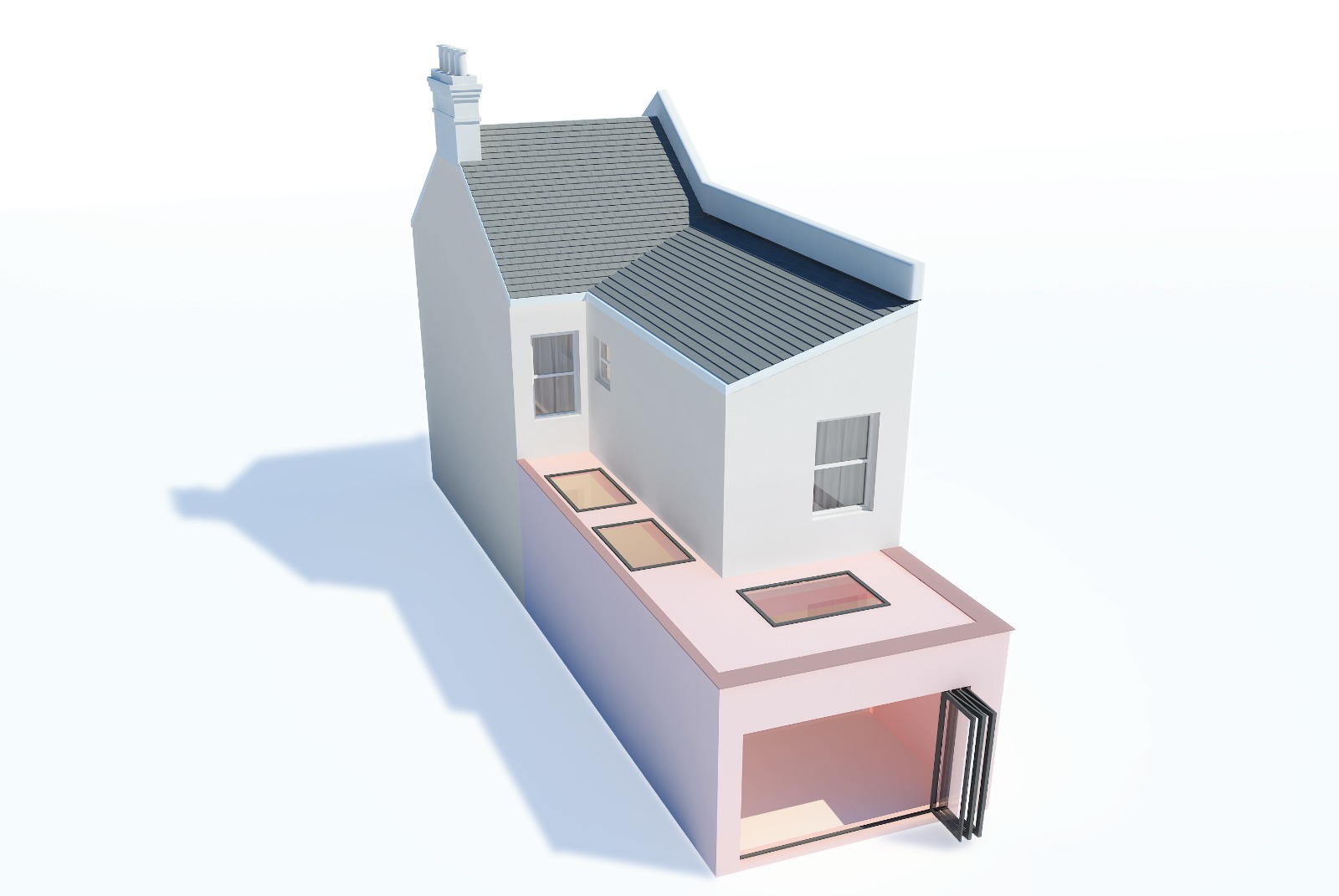The newly relaxed rules make this the perfect time to design and create the ultimate rear extension with minimal fuss and hassle. And with the right help and expert advice, constructing the perfect rear extension is a sure-fire way of adding space, style, comfort, and value to your home.
A rear extension is essentially an extension that is built on the rear area of a property. Given the relatively large area available at the rear of most properties, a rear extension is the most obvious and practical way to add substantial space and value to a home.
Rear extensions are broadly categorised into two main types; namely:
Single storey rear extensions
A simple and straightforward build, single storey rear extensions offer tremendous versatility to homeowners in their design and function. They are often utilised for the creation of kitchen extensions, guest bedrooms, and office pods.
Double storey rear extensions
Though more complex to design and build, multi-storey extensions are considered to be extremely cost-effective options as they help double the square footage of an extension without doubling the roofing and excavation costs. They also give rise to numerous design possibilities including bedrooms, bathrooms, or even high-ceilinged living and dining areas.
It’s unlikely.
According to the newly-relaxed rules, large single-storey rear extensions fall under permitted developments, and can be constructed without requiring full planning permission. This includes extensions up to 8m for detached properties, and 6m for semi-detached and terraced homes.
However, these larger extensions do require prior approval notification (neighbour consultation scheme). This informs the council of your intention to build a large extension, and the council will then notify your neighbours. The process helps eliminate future disputes and legal problems that could prove costly if brought up after the construction has begun.
Other requirements for your rear extensions to qualify as permitted developments include:
- They are not constructed on flats, maisonettes, or properties listed in conservation areas
- They do not exceed the height of the original house
- They are more than 7m away from the rear boundary
- They do not take up more than 50% of the garden/ outdoor space
- The materials utilised are similar in appearance from those on the existing house
- The extension does not include balconies and/or verandas
- Any upper floor windows in side elevation is obscure glazed and non-opening
For a comprehensive understanding of the requirements for planning permission and the specifications associated with permitted developments, property owners could also visit the planning portal.
Party wall agreements and building regulations approval must also be considered to ensure that the proposed home extension meets building guidelines and standards.
These larger extensions are perfect for adding valuable living space, comfort, and style to your home. Some of the most popular options for utilising this newly-created extension include:
- Additional bedrooms
- Bathrooms
- Modern kitchen extensions
- Open plan living areas
- Playrooms/ study areas
- Home libraries
- Conservatory-style living areas
- Alfresco-style dining areas
- Office pods
In actuality, the use of this added space is limited only by your imagination.
To help make the most of this extension, and to ensure that the new build does not hinder the natural light entering your home, bi-folding or sliding glazed doors, and roof lights are a must. They not only help create bright and airy spaces, but also add a wonderful aesthetic of bringing the outdoors in.
The cost of a rear extension is dependent on the number of factors including:
- The design/ complexity of the extension
- Location
- Groundwork involved
- Building materials
- Fittings and fixtures
- Specialists’ fees, etc.
Therefore, the cost of a rear extension typically ranges from £20,000 to £80,000. However, the cost is largely made up by the value that the extension adds to the property.
Good Design and Build offer free consultations and quotations for proposed extensions. This allows homeowners to plan their home extension budgets and designs to their specifications.
With the relaxed guidelines and requirements, building a larger rear extension seems like the ideal way to upsize and upgrade your home effortlessly. But to ensure that you create the perfect extension that not only meets your requirements, but also proves to be a valuable investment, it is crucial to have the best experts involved.
This is where Good Design and Build come in. With years of experience, unmatched expertise and unparalleled professionalism, we are the best in the business.
Our team of specialists include surveyors, architects, builders, technicians, engineers, and project managers. This allows us to oversee every aspect of the extension project from start to finish.
This means that we not only create exceptional extensions of impeccable standards, but also provide homeowners with the best, hassle-free extension experience.
How we deliver projects
Our process is simple and divided into two distinct phases with separate contracts: Design and Build. As a client you only commit to one phase at a time depending on what stage of the process you are in. Each phase consists of three stages as described below.
1. Design
This is the kick-off point for your project. We carry out a complete architectural measured survey of the property. This allows us to create accurate CAD design drawings. This is followed by a design meeting to start discussing your ideas in more detail.
2. Planning
At this stage we finalise the designs with you and start preparing planning applications as needed. We place a high priority on ensuring that plans, designs and schedules are all based on a thorough and detailed understanding of planning guidelines. We co-ordinate with local authorities until the decision is made, and the planning approval is secured.
3. Technical
Once the planning consent is secured, we translate the design drawings into more detailed technical drawings for the purposes of building control and construction. This also includes specifications and structural calculations. At this stage, we will also submit to you our ‘no obligation’ quote for the build phase.
4. Pre-build
90% of our clients decide to stick with us after the design phase is completed. Once the build contract is signed, we kick off the process by making sure all the pre-build processes are complete. These include assistance with party wall agreements, Thames Water build over agreement, submitting building control application, and preparing method statements etc as needed. This stage ends with a pre-start meeting with your foreman before the actual build begins.
5. Build
One of our foremen will be dedicated to your project and will be on-site to manage everyday works. Our project managers will be overseeing the works to make sure they are completed to high standards, within your budget and on time. Throughout the process we will keep you updated with the progress and coordinate the works with third parties such as kitchen or flooring suppliers. We will also advise and guide you to choose any suppliers if needed.
6. Handover
As the build draws to finish, we will help to iron out any ‘snags’ to make sure everything is completed to your satisfaction. We will put together all necessary certificates such as gas, electricity and building control completion along with warranties for glazing, boiler etc. At the final completion meeting, we will hand you these documents, together with the keys to your house. Needless to say, you can contact us any time after this, if you want us to look at something.
This is the kick-off point for your project. We carry out a complete architectural measured survey of the property. This allows us to create accurate CAD design drawings. This is followed by a design meeting to start discussing your ideas in more detail.
At this stage we finalise the designs with you and start preparing planning applications as needed. We place a high priority on ensuring that plans, designs and schedules are all based on a thorough and detailed understanding of planning guidelines. We co-ordinate with local authorities until the decision is made, and the planning approval is secured.
Once the planning consent is secured, we translate the design drawings into more detailed technical drawings for the purposes of building control and construction. This also includes specifications and structural calculations. At this stage, we will also submit to you our ‘no obligation’ quote for the build phase.
90% of our clients decide to stick with us after the design phase is completed. Once the build contract is signed, we kick off the process by making sure all the pre-build processes are complete. These include assistance with party wall agreements, Thames Water build over agreement, submitting building control application, and preparing method statements etc as needed. This stage ends with a pre-start meeting with your foreman before the actual build begins.
One of our foremen will be dedicated to your project and will be on-site to manage everyday works. Our project managers will be overseeing the works to make sure they are completed to high standards, within your budget and on time. Throughout the process we will keep you updated with the progress and coordinate the works with third parties such as kitchen or flooring suppliers. We will also advise and guide you to choose any suppliers if needed.
As the build draws to finish, we will help to iron out any ‘snags’ to make sure everything is completed to your satisfaction. We will put together all necessary certificates such as gas, electricity and building control completion along with warranties for glazing, boiler etc. At the final completion meeting, we will hand you these documents, together with the keys to your house. Needless to say, you can contact us any time after this, if you want us to look at something.
Featured Projects
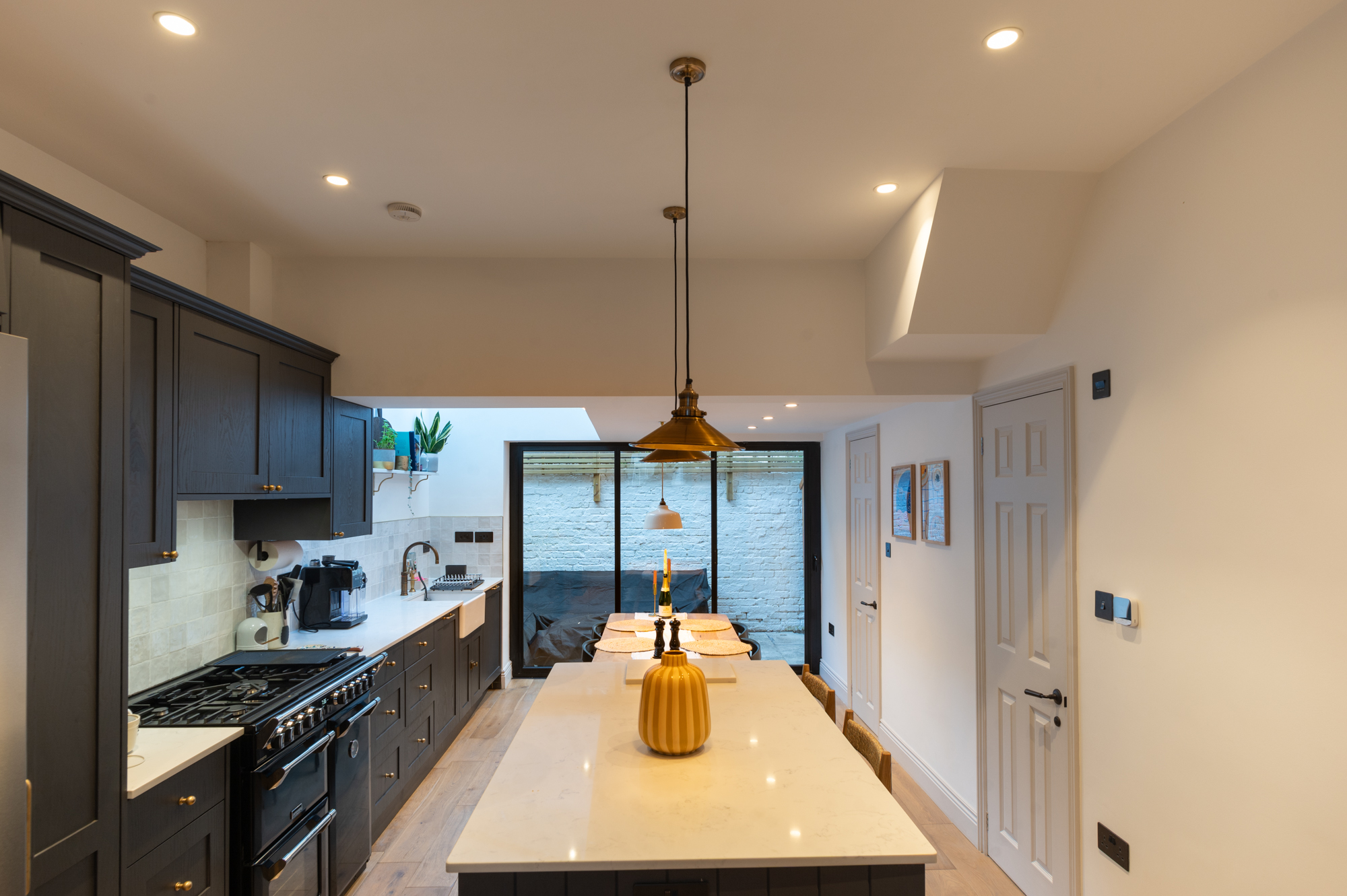
Fulham
Orbain Road SW6 7JZ
This project was completed in 2023 and the approximate budget was £101,000.
Learn more
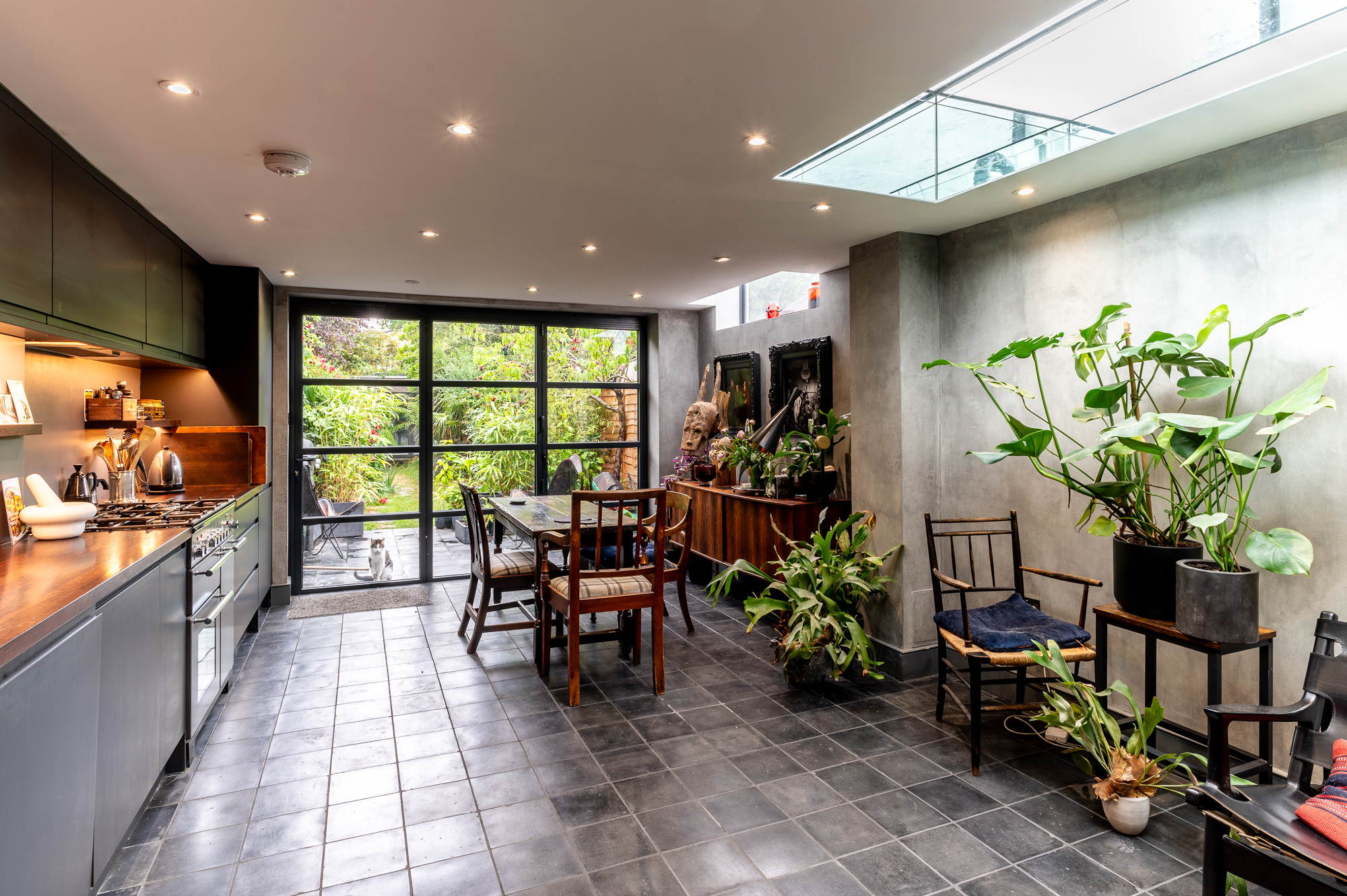
Lambeth
Hetherington Road SW4
We completed this stunning project for our client Angus in Lambeth.
Learn more
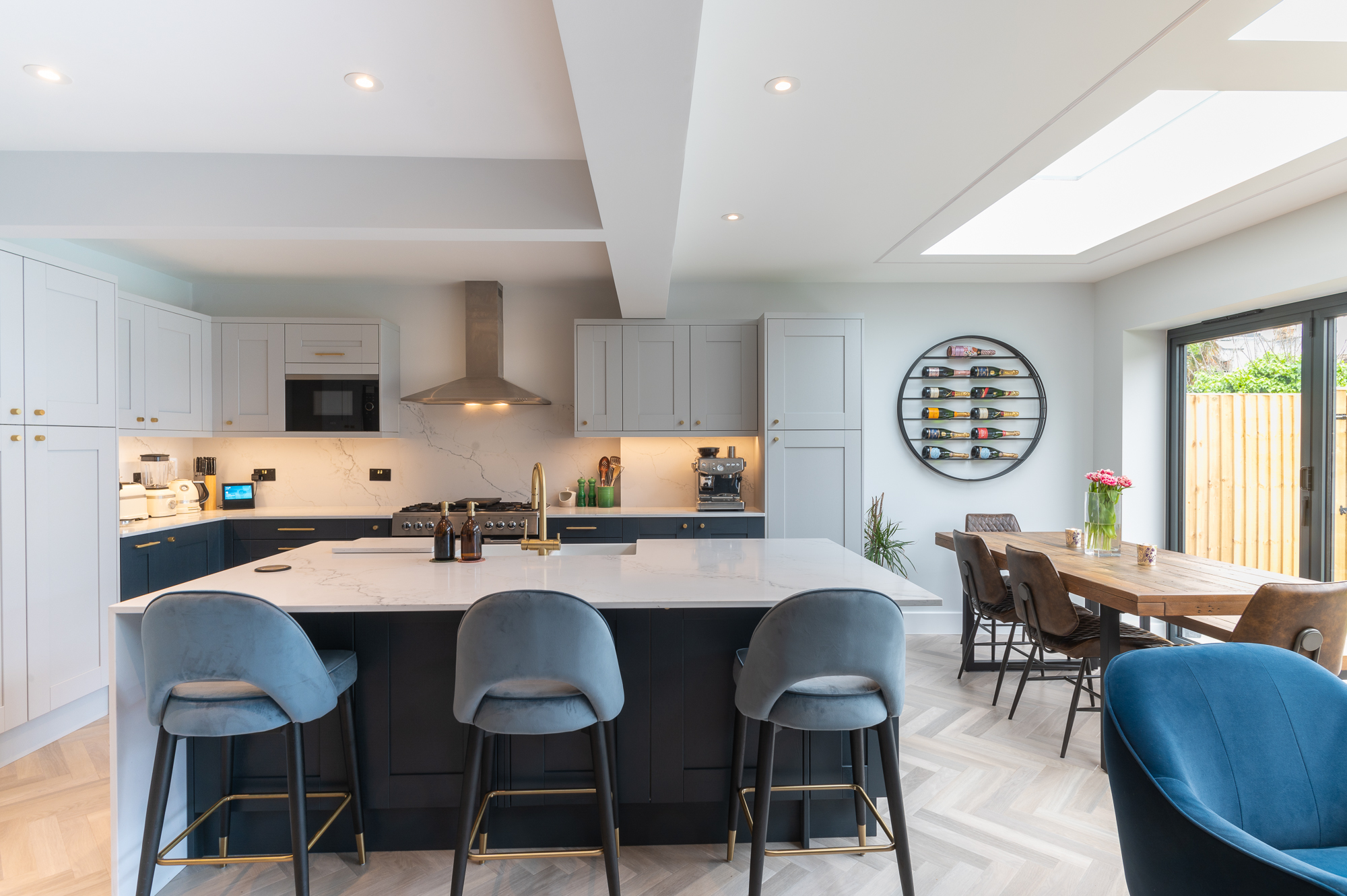
Teddington
Station Road SW4 7PA
We completed this exciting project for our clients on Station Road, a quaint residential area in the heart of Teddington.
Learn more

Leyton
Windsor Road E10
We completed this kitchen extension on Windsor Road, a charming residential street nestled in the heart of Leyton.
Learn more
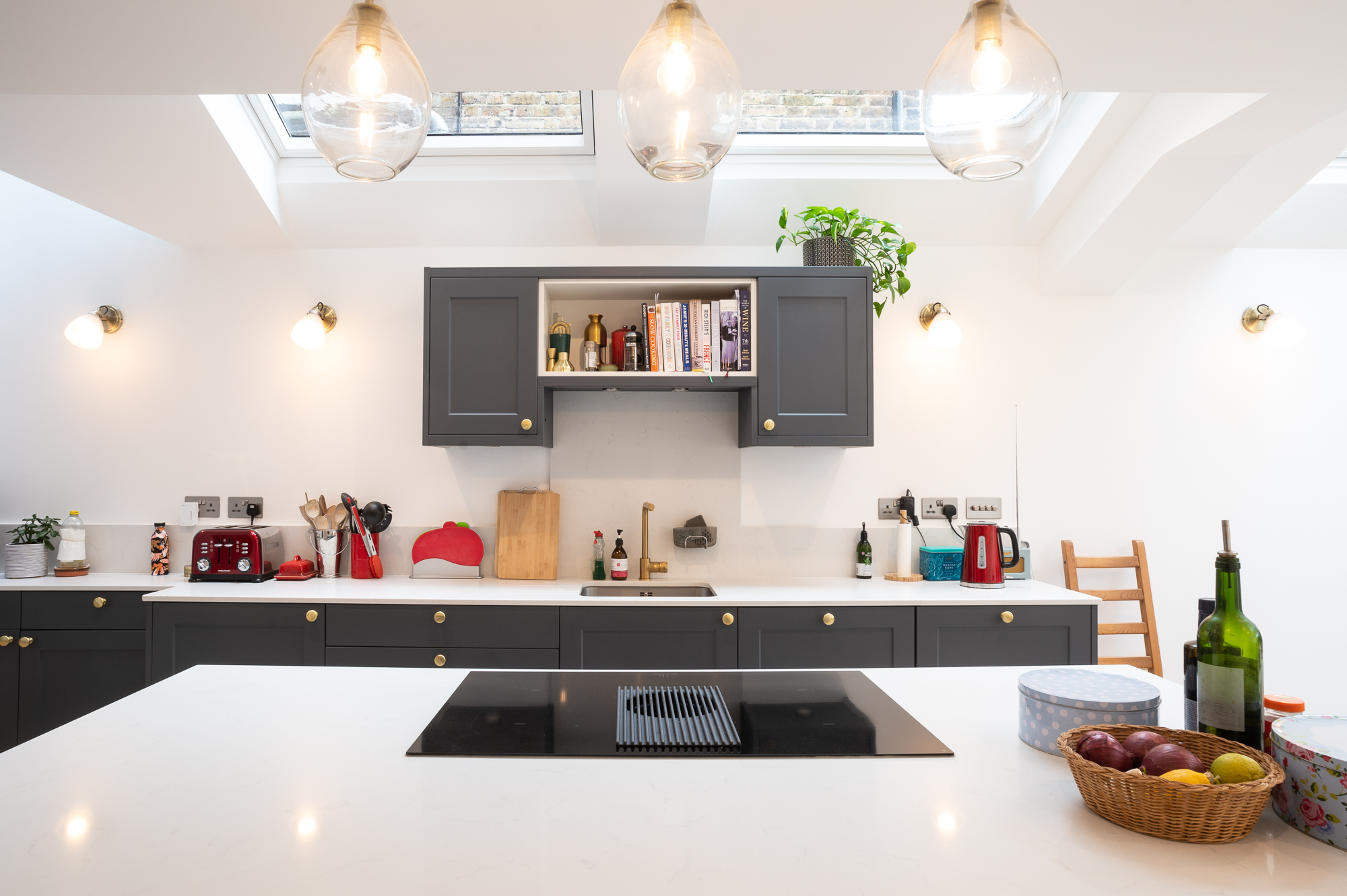
Clapham
Hydethorpe Road SW12 0JF
We did this kitchen extension project for our clients in Hydethorpe Road SW12.
Learn more

Fulham
Orbain Road SW6 7JZ
This project was completed in 2023 and the approximate budget was £101,000.
Learn more

Lambeth
Hetherington Road SW4
We completed this stunning project for our client Angus in Lambeth.
Learn more

Teddington
Station Road SW4 7PA
We completed this exciting project for our clients on Station Road, a quaint residential area in the heart of Teddington.
Learn more

Leyton
Windsor Road E10
We completed this kitchen extension on Windsor Road, a charming residential street nestled in the heart of Leyton.
Learn more

Clapham
Hydethorpe Road SW12 0JF
We did this kitchen extension project for our clients in Hydethorpe Road SW12.
Learn more
What Our Clients Say
Build a Quote!
Let's get started with building your own bespoke quote for your dream extension. Tell us as much in detail as possible to get most accurate price.
Get StartedBuild a Quote!
Let's get started with building your own bespoke quote for your dream extension. Tell us as much in detail as possible to get most accurate price.
Get Started







